Context:
Russia is the world’s largest country. It occupies a significant part of the Eurasia that has carried the main genetic and evolutionary programs for the past 5,000 years. Continent America in the previous cycle (11,000 – 5,000 years ago) played the role of Mainland-Mother, after which it transferred these maternal functions to Eurasia. The ancient Unity of Eurasia and America has always existed. It will manifest itself more and more until, finally, East and West, unite in an absolutely single entirety.
On 27 March 1806 Russian ship arrived to San Francisco Bay to meet then Spanish comandante of San Francisco, Don José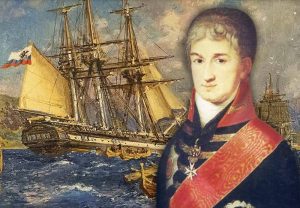 Darío Argüello with the aim to buy wheat, barley, peas, beans, flour, tallow, salt and other items for the Russian America. The head of Russian mission was count Nikolai Rezanov, a chamberlain of the court, a gentleman of the Order of the Maltese Cross, commander of which was Russian Emperor Paul himself. Rezanov was highly educated and promoted the project of Russian colonization of Alaska and California. Count Rezanov’s biggest legacy was the Russian-American Company that managed the Russian colonial possessions in North America.
Darío Argüello with the aim to buy wheat, barley, peas, beans, flour, tallow, salt and other items for the Russian America. The head of Russian mission was count Nikolai Rezanov, a chamberlain of the court, a gentleman of the Order of the Maltese Cross, commander of which was Russian Emperor Paul himself. Rezanov was highly educated and promoted the project of Russian colonization of Alaska and California. Count Rezanov’s biggest legacy was the Russian-American Company that managed the Russian colonial possessions in North America.
During a stay of six weeks in San Francisco Rezanov fell in love with the 15-year-old daughter of the comandante Concepción Argüello («Conchita»). He was 42 years old. The couple became engaged despite their differences in religion and nationality. Rezanov’s diplomatic skill won over the Catholic clergy. Being a Russian Orthodox Church follower, Rezanov proceeded to Saint Petersburg to get permission from the Tsar for the marriage. He wrote personal letters to the Pope and to the King of Spain asking dispensation and royal consent for his marriage.
In September 1806, Rezanov reached Okhotsk, the first city and one of the oldest Russian settlements in the Far East. It is located on the shore of the Sea of Okhotsk, a marginal sea of the western Pacific Ocean.
The autumn thaw began, and it was impossible to go further, but Rezanov decided to take a difficult journey by horseback riding. Crossing rivers, he fell into the water several times because of thin ice. Several nights he spent right in the snow. As a result, he caught a cold and lay in fever and unconsciousness for 12 days. As soon as he woke up, he set off again. On the way, he lost consciousness, fell from his horse and hit his head hard. He was taken to Krasnoyarsk, where he died in March of 1807.
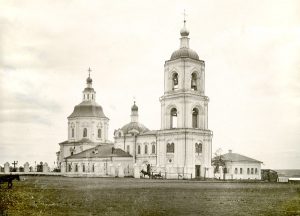
Krasnoyarsk, Resurrection Cathedral, early XX century
Count Rezanov was buried at the cemetery of the Resurrection Cathedral, the first stone building of the city of Krasnoyarsk. A large granite monument was erected on the grave of the commander. The Mira (Rus. World, Peace) street, starting from the Resurrection Cathedral, is the main street of the city of Krasnoyarsk.
Mirra (Rus. Mir Ra, Eng. World of Ra / Sun) is a special star in the Sirius system. Since the ancient meaning of “Ra” is the Great Central Sun, Mirra Sirius is the World of the Inner Central Sun, the Sacred Solar World that connects everyone with the Creator God.
In the second half of the 1950s, according to the conclusion of the Council for the Protection of Cultural Monuments of the USSR Academy of Sciences, the Resurrection Cathedral in Krasnoyarsk was recognized as a most valuable architectural monument. They sent a letter to the Ministry of Culture of the Russian Federation with a request to allocate a specialist and funds for the restoration of the Resurrection Cathedral, and to organize patronage over the grave of «a prominent scientist N.P. Rezanov, a pioneer in the development of Alaska and California».
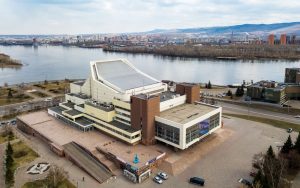
Krasnoyarsk, Philharmonic Hall
Despite the opinion of USSR Academy of Sciences, the city authorities changed their attitude to the cathedral. In the early 1960s, the Resurrection Cathedral was finally destroyed, the grave of Rezanov was lost. In 1983, the Philharmonic Hall was built on the site of the destroyed cathedral. During
construction, the cultural layer was not investigated; archaeological work was not carried out. In October 2007, during the renovation of the Philharmonic on an area of one hundred square meters around the building, about fifteen burials were destroyed. Exploration work has shown that the territory of the cemetery is about five hundred square meters.
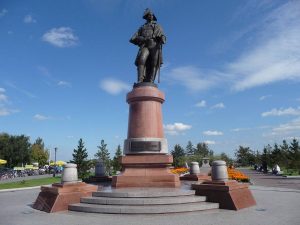 In the summer of 2007, a monument to Commander Rezanov was erected near the Philharmonic Hall and was restored a monument erected in the 19th century on the grave of Rezanov.
In the summer of 2007, a monument to Commander Rezanov was erected near the Philharmonic Hall and was restored a monument erected in the 19th century on the grave of Rezanov.
It is stated that in the late 1950s his remains were moved from the cemetery of the Resurrection Cathedral to the Trinity churchyard of Krasnoyarsk. On October 28, 2000 in the Trinity church there was a service for the dead and the dedication of a memorial to Rezanov. The memorial has a white cross, bearing on one side the inscription “Nikolai Petrovich Rezanov 1764 — 1807. I will never forget you”, and on the other side — “Maria Concepcion 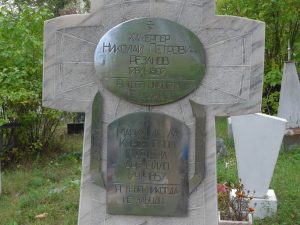 de Arguelio 1791 — 1857. I will never see you”. These are words from a famous Russian romance and opera dedicated to the love story of Rezanov and Conchita. Phrases on the cross “I will never forget you” and “I will never see you” are linked by arrows “America” and “Russia”.
de Arguelio 1791 — 1857. I will never see you”. These are words from a famous Russian romance and opera dedicated to the love story of Rezanov and Conchita. Phrases on the cross “I will never forget you” and “I will never see you” are linked by arrows “America” and “Russia”.
Gary E. Brown, Police Chief of the city of Monterey, (California) was in Krasnoyarsk on the ceremony. Chief Brown scattered on Rezanov’s tomb some earth from Conchita’s grave and took some earth from Rezanov’s grave to scatter on the resting place of Conchita (Concepcion de Arguello) in Californian Benicia. “It will connect them forever in a symbolic way” said the chief. He went on to share that the love story which took place 200 years ago forever united the cities of Krasnoyarsk and Monterey, the first capital of California.
Although freed from her engagement, Conchita remained faithful to Rezanov. According to legend, she went to the cape every morning for more than a year, sat on stones and looked at the ocean. Now at this place is the support of the Golden Gate Bridge. In 1808, she learned about Rezanov’s death from a letter sent to her father by Alexander Baranov, the governor of Russian America.
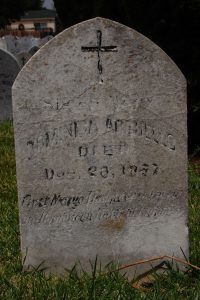
Benicia (USA), Saint Dominic’s Cemetery, Grave of María Concepción Argüello
Conchita chose to stay single and did not try to get married anymore. At the end of her life, she became a Dominican nun at Santa Catalina Monastery and Academy which was founded in Monterey in 1851. She was given the religious name of Sister Mary Dominica, O.P. and thereby became the first native Californian to enter the Dominican Order. She died in the monastery in 1857. Conchita was buried near San Francisco, in Benicia, in the cemetery of the Order of the Dominicans. A monument marks her grave.
Death of Rezanov in Krasnoyarsk might have a deeper meaning. Outside the city ancient River Mana enters the River Yenisei, the fifth-longest river system in the world, and the largest to drain into the Arctic Ocean.
Beside River Mana, Farther Yenisei receives the waters of other rivers with a special sacral history. For instance, Angara (1,779 km long), formerly known as the Upper Tunguska, the only river flowing from Baikal, the world’s oldest and clearest lake. It is the largest tributary of the Yenisei.
The Lower Tunguska River (2,989 km long) is the second largest tributary of the Yenisey, joining it at Turukhansk. The Lower Tunguska itself receives the Vivi River, flowing out of Lake Vivi famous as the geographical center of Russia. The spot is marked by a 7-metre monument erected in August 1992. Nearby is an even higher cross dedicated to St. Sergius of Radonezh.
Podkamennaya Tunguska (1,865 km long) also known as Middle Tunguska or Stony Tunguska is another major tributary of the Yenisey. The world famous Tunguska event occurred near this river in Krasnoyarsk Krai in June 1908.
The explosion at an altitude of about 5 — 10 km flattened an estimated 80 million trees over an area of nearly 2,200 km2 of uninhabited forest. The explosion was such powerful that it was heard for 1200 km. The earthquakes were so strong that echoes were heard even in Germany.
The resulting air explosion is associated with a meteorite fall, but so far no one has found its fragments. Moreover, celestial bodies in the atmosphere cannot explode.
World Channeling Magazine #7(39) 2017 informs that it was «a special celestial body, which possessed the properties of a
meteorite, and a comet, and ball lightning, and the properties of some other cosmic bodies.» It “contained energy information both for special sacred (subtle) spaces of the Earth, and for the dense energy-information centers of the planet”. The place of the so-called fall of the Tunguska meteorite in the Siberian taiga «is a special, sacred site on the body of the Earth.»
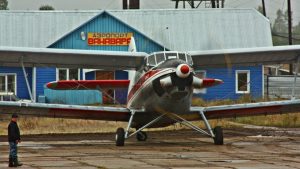
Vanavara Airport
Around 26,000 years ago the Lemurians founded the Temple of the Sun at the site of modern Vanavara village, nor very far from which the meteorite fell in 1908. In the Lemurian language the name of this temple sounded as Eywanara. Interestingly, Eywa is the collective identity of the Pandora world, the goddess of the people of Navi in the movie Avatar; Nara (Sanskrit ‘Hero’) is a river in Moscow Region. This majestic temple lasted more than 3,000 years. A sacred space once existed at the site of modern Vanavara Airport, where more than once the Lemurians performed the collective Ascension. Vanavara Airport is 735 km north-east from Krasnoyarsk.
On June 9, 2007, in the year of the 200th anniversary of the death of Rezanov in Krasnoyarsk, the memorial complex dedicated to min was opened on the city square in front of the Great Concert Hall.
 The mayor’s office of Krasnoyarsk sent an official invitation to the Governor of California Arnold Schwarzenegger to open the monument to Commander Rezanov. The fate of Rezanov is inextricably linked with the city of San Francisco. In the center of this city, on the «Russian hill», there are monuments to Russian sailors who explored the west coast of America. Among them is a monument to Commander Rezanov. California residents respect this historical figure. Therefore, Krasnoyarsk residents decided to invite Schwarzenegger here to Krasnoyarsk, where the remains of Rezanov rest.
The mayor’s office of Krasnoyarsk sent an official invitation to the Governor of California Arnold Schwarzenegger to open the monument to Commander Rezanov. The fate of Rezanov is inextricably linked with the city of San Francisco. In the center of this city, on the «Russian hill», there are monuments to Russian sailors who explored the west coast of America. Among them is a monument to Commander Rezanov. California residents respect this historical figure. Therefore, Krasnoyarsk residents decided to invite Schwarzenegger here to Krasnoyarsk, where the remains of Rezanov rest.
At the opening of the Rezanov Monument in Krasnoyarsk, guests from California read out a proclamation by the Mayor of the City and County of San Francisco, in which he expresses his gratitude to Rezanov for establishing diplomatic and trade relations with California. “I, the Mayor of the City and County of San Francisco, proclaim July 8, 2007 as Commander Rezanov’s day in San Francisco and assure this with my signature and seal,” it said.
Created by Nikolai Rezanov, the Russian-American Company made an invaluable contribution to the development of Russian America that is present Alaska and the northern part of California, including Mount Shasta, originally named by the Russians «Happiness» (Schast’ye).
In memory of the passionate love between Rezanov and Conchita, as a sign of the reunion of lovers, a fir tree growing at the grave of Conchita, was brought from California to the memorial tomb of Rezanov in Krasnoyarsk.
The American admiral Van Derse, not without reason, wrote in 1960: «If Rezanov lived ten years longer, what we call California and American British Colombia would be Russian territory.»
Before leaving Russian America for Saint-Petersburg / Krasnoyarsk in 1806 Rezanov left instructions to the Chief Ruler of the Russian colonies in America, Alexander Baranov, with the idea of creating an agricultural base in Northern California to supply Alaska with food. Such a Russian settlement was founded in 1812 and named Fort Ross.
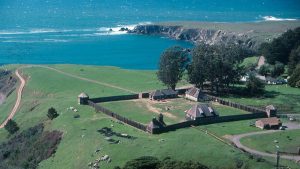 In the early XIX century, Spanish and Russian expansion met along the
In the early XIX century, Spanish and Russian expansion met along the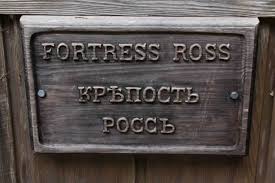 coast of Spanish Alta California, with Russia pushing south and Spain pushing north. Fortress Ross (Fort Ross), located 100 km north of San-Francisco, became the southernmost Russian settlements in North America. It was Russian establishment on the west coast of North America from 1812 to 1842.
coast of Spanish Alta California, with Russia pushing south and Spain pushing north. Fortress Ross (Fort Ross), located 100 km north of San-Francisco, became the southernmost Russian settlements in North America. It was Russian establishment on the west coast of North America from 1812 to 1842.
Fortress Ross was established in 1812 by Commerce Counselor Ivan Kuskov of the Russian-American Company. He also named the modern Russian River Slavyanka (the Slav River). Its mouth is 13 km. south from Fortress Ross. Ivan was born in Russian town Totma located on the Sukhona River (560 km long).
The Sukhona and Yug Rivers form the Northern Dvina River on the edge of town Veliky Ustyug whose inhabitants were in charge of the Russian-American Company. In Sanskrit, “dvina” means “divine” and “double”. The root “Yug” creates many Sanskrit words. The most famous of them is “couple”, “generation”, “age of the world”, etc. Hence, Kali Yuga. Through Sanskrit, one can understand the meaning of the names of the Sukhona River in Russia, the lake Sukhna in India and the region of Es Sukhna in Syria.
The name of the Fort Ross is derived from the Russian word Rus or Ros, the same root as the word Rossiya, name of Russia in Russian language. Also, the gaelic word “ros” means a “headland” and is often used as part of place names in Scotland. Ross is a Highland Scottish clan first named as such by King Malcolm IV of Scotland in 1160.
The Arbroath Declaration (1320) of the independence of Scotland from England says that the ancestors of the Scottish people left Great Scythia (i.e. Russia). On the day of signing this declaration, addressed to Pope John XXII, Tartan Day is celebrated annually. Great Tartaria or Grande Tartaria is a vast territory east of the Ural Mountains on maps until the 19th century.
The Ross Ice Shelf is the largest ice shelf of Antarctica, the highest continent of the Earth. The Roosevelt Island is located in the west of the Ross Sea. The Roosevelt Island lies under the eastern part of the Ross Ice Shelf of Antarctica.
Helena Roerich, a Russian theosophist, received messages from the Teachers of the East to the USA President F. Roosevelt. He took an active part in signing by a number of countries of the Roerich Pact declared the necessity for the protection of the cultural product and activity of the world — both during war and peace. The pact was named after Helena’s husband Nicholas Roerich, famous Russian painter and philosopher.
The honor of the discovery of Antarctica belongs to the Russians. They opened the sixth continent in January 1820. The Russian sailors not only discovered a huge continent located around the South Pole, but also carried out the most important research, compiled a scientific understanding of Antarctica. Their discoveries were a major achievement of Russian and world geographic science, as well as the emerging oceanography at that time. Antarctica is considered the place where plasma energy comes from. It feeds all the tunnels connecting the Earth with other dimensions.
In the symbolic year 2012, there was 200 years anniversary of Fort Ross and other Russian settlements in California. In fact, the Russians did a lot to ennoble North America. California’s first windmills and shipyards, orchards and vineyards appeared in Fort Ross. The Russian colonists first brought to California many of the benefits of European civilization, for example, window panes. In the years 1837-1840 Russian man Egor Chernykh conducted the first systematic weather observations in California.
The road to Fort Ross from San Francisco lies through the American the town of Sebastopol formed in the 1850s. At one time, four other California towns were also named Sebastopol. Many American people supported Russia in the siege of Sebastopol (Rus. Sevastopol) lasted from October 1854 until September 1855, during the Crimean War. The allies (French, Sardinia, Ottoman, and British) intended to take over Sevastopol (Sebastopol), the capital of the Crimea, Russia’s principal naval base on the Black Sea and the home of Russian Black Sea Fleet. Sevastopol is one of the classic sieges of all time.
During the Victorian Era, the battle was repeatedly memorialized. The Charge of the Light Brigade involving the British light cavalry led by Lord Cardigan against Russian forces during the Battle of Balaclava on 25 October 1854 in the Crimean War resulted in the total loss (death) of most noble members of the English aristocracy served in the brigade. Among them was Winston Churchill’s grandfather. He was the commander of an English equestrian squadron. Having received Stalin’s permission, the British Prime Minister visited the place of battle in February 1945 after the Yalta conference of leaders of the anti-Hitler coalition.
It is known that Russia helped the United States gain independence in the past. The Russian Empress Catherine the Great categorically refused the English king George III to send a corps of Russian soldiers «to suppress the uprising in the American colonies.» In the spring of 1779, Washington wrote to Lafayette, «We are much pleased to learn from a reliable source that the requests and proposals of Great Britain to the Russian Empress were rejected with contempt.» The following 1780, Catherine proclaimed the “Declaration of Armed Neutrality» in response to an attempt by the British authorities to inspect the merchant ships of neutral states, sailing to America and confiscating military supplies. The declaration allowed Russia, with the help of its warships, to protect the inviolability of its trade with America at sea. It is noteworthy that under Catherine, in 1783, the Crimea became part of Russia, and England recognized the independence of the United States.
It is stated that Rezanov was responsible for the safety of the Empress Catherine during her trip to the Crimea. Later on young favorite of Catherine Platon Zubov considered Rezanova a dangerous competitor and drove his rival to Irkutsk (the Lake Baikal) to inspect the activities of the company of Grigory Shelikhov, the founder of the first Russian settlements in America. It ended up Rezanov marrying the daughter of Shelikhov, Anna, whom he passionately loved. Grigory Shelikhov (1747 — 1795) founded in 1781 the North-East Company, which became the prototype of the Russian American Company established in 1799. The key players in establishing were Shelikhov’s wife (then widow) and his and her son in law Rezanov. Members of the Russian imperial family of Romanovs also became stakeholders of the Russian American Company.
At the height of the Civil War in the USA (1861 — 1865), in the difficult hour of American history, when all of Europe turned its back on the United States, only Russia provided assistance to the young state. In 1863, Russian Emperor Alexander II responded to a request from the Lincoln government for military assistance and sent two military squadrons to the United States. One (8 ships) was in the raid at New York, the second (9 ships) — at San Francisco. The Russian sailors were ordered to fight any force, marine or land, which would take the side of the slave-owning South, which had common economic interests with England.
This was the military assistance of Alexander II, who had just liberated the Russian peasants, to Abraham Lincoln, the liberator of American slaves, the 16th president of the United States, the leader of the northerners during the Civil War. Two years after its completion, Lincoln died at the hands of a hired killer. Assessing the role of Lincoln in history, the great Russian writer Leo Tolstoy said: «He was what Beethoven was in music, Dante in poetry, Raphael in painting, Christ in the philosophy of life.» After Lincoln attempts on Alexander II began. One of them succeeded in 1881. The death of Alexander II dramatically changed the course of historical events in Russia and finally led to the February coup of 1917, in which the English agents took an active part.
The Russian Hill is one of the three hills around which San Francisco is located. The town of Sebastopol (Sevastopol) is to the north. The Russians were frequent guests in San Francisco.
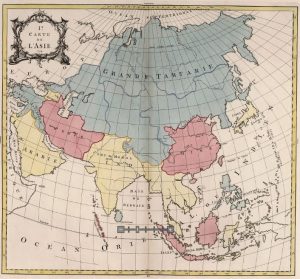 Tyumen land is still a major part of the way via central Russia to the Pacific Ocean and, eventually, to former Russian America. Up to beginning of the XIX century a historical region in Asia located between the Caspian Sea, Ural Mountains and the Pacific Ocean was known as Tartaria or Great Tartaria.
Tyumen land is still a major part of the way via central Russia to the Pacific Ocean and, eventually, to former Russian America. Up to beginning of the XIX century a historical region in Asia located between the Caspian Sea, Ural Mountains and the Pacific Ocean was known as Tartaria or Great Tartaria.
According to the information of the World Channel magazine, on the site of present Tyumen less than 5,000 years ago the city of Katarus was founded, which became the center of the great state of Tartaria. It existed on the territory of modern Siberia in the period from 2811 BCE to 2298 BCE. The climatic conditions at that time were different, climate was hot and humid.
Tartaria, along with Sumer and Egypt, is one of the seven centers of the origin of modern civilization. The mission of Tartaria was, in its own way, unique. Its founders, the Katarussians united different nations, introduced them to culture and gave a powerful impetus to the organization of a new human society throughout the Asian continent and in Eastern Europe.
Tartoaria had the task of accepting genetics of the lower dimensions and directing it to the higher. In the Southern Urals, they built the city of Arimoya, which radiated Light and Knowledge. The Aryans were the Katarussians who lived in the Southern Urals before the start of modern civilization. They made a continuity between past civilizations and modern human society.
The birth of Tartoariya began when a squad of Katarussians arrived from the Ural Mountains and built the town-fortress of Sutramta-Katarus on the site of modern Tyumen. The name of their town meant «A place for joint action in the outside world.» Symbolically, it contains the name of the great teacher who lived 35,000 years ago, the Lemurian Ramta, who ascended in his body on the banks of the Indus River.
Tartoaria has deep ties with India. The actual development of Tartoaria began after the return of the Katarussians to Sutramta-Katarus along with the people of the Sleeping City who were awakened by them at the foot of the Shivalik ridge in India. These people had a special star genome, important for the evolution of mankind. After this, Sutramta-Katarus subsequently became the center of the great state of Tartaria or Tartoaria, that is, «the Center from which the inner Sun purposefully transfers energy to the outside world.» From here the inner, spiritual world sprint into the outer world.
The town of Raltsu once existed on the territory of modern Tyumen before the arrival of the Katarussians. Raltsu was the capital of the Urals, who later became allies of the Katarussians.
The Katarussians were not ordinary people, they were awakened from the state of somadhi and came with an open memory of their participation in the Great Experiment, which lasted on Earth for more than five million years.
The Earth is an important experimental planet for obtaining new experience in many evolutionary directions. In the future, the Earth will become a center where the most important events will unfold to transform the current Universe and create new worlds with billions of new life forms.
After completing their mission, the Katarussians ascended and again left their somadhi bodies in the underground vaults of the Ural Mountains. It is 300 km east from the capital of the Ural (city of Yekaterinburg, related to the Romanovs) to Tyumen.
In Tyumen was born Irving Berlin (1888 — 1989), the author of “God Bless America”, unofficial national anthem that has become the expected way for U.S. presidents to end official speeches. His father, a cantor in Tyumen synagogue, uprooted the family to America, as did many other Jewish families in the late XIX century, including the founders of Hollywood.
In the 20th century, Tyumen became of oil and gas capital of the Soviet Union. It fed its energy all over the world. The major Russian reserves of oil and gas are still located in Tyumen region, biggest in the country. In the 1960s, large deposits of oil were discovered several hundred kilometers north of Tyumen. So to speak, ancient Tyumen took the oil and gas relay from ancient Azerbaijan.
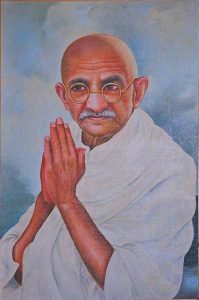 During the World War II the mummified body of Lenin was evacuated to Tyumen. In the XX century, only two
During the World War II the mummified body of Lenin was evacuated to Tyumen. In the XX century, only two  people were awarded the title of «Mahatma» — Gandhi and Lenin. “The Father of the Indian Nation” Gandhi was born in Gujarat, having ancient ties with Russia. Political views, the ideological and philosophical formation of Gandhi occurred in South Africa, where he fought for the rights of Indians for two decades.
people were awarded the title of «Mahatma» — Gandhi and Lenin. “The Father of the Indian Nation” Gandhi was born in Gujarat, having ancient ties with Russia. Political views, the ideological and philosophical formation of Gandhi occurred in South Africa, where he fought for the rights of Indians for two decades.
Leo Tolstoy, with whom Gandhi was in correspondence, had a great influence on the formation of his worldview. “Russia, represented by Tolstoy, gave me a teacher who provided the theoretical basis for my non-violence,” Gandhi wrote later. Gandhi gave Tolstoy’s name to his house in Johannesburg.
It is symbolic that Tolstoy’s cousin uncle (also known as the «American») and brother were married to gypsy girls whose ancestors were from India. This uncle of Leo Tolstoy was nicknamed the «American» after his voyage to North America as a member of delegation headed by the Count Rezanov.
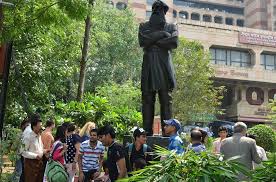
Monument of Leo Tolstoy in Delhi
Symbolically, the monument of Leo Tolstoy in the center of Indian capital gazes towards Tibetan market. Tibet is among most spiritual places on Earth. The Tibetan Plateau is the origin of the Indus River, one of the largest rivers in the world in terms of annual flow.
It is acknowledged that the Indus River has given its name to the whole Indian subcontinent. This river was known to the ancient Indians in Sanskrit as Sindhu. The same name had the Russian River Don. This is the 5th longest river in Europe. The first is the Volga, with which the Don connects the famous Volga-Don Canal in the place of their maximum convergence. It starts in Volgograd (Stalingrad).
The battle of Stalingrad (23 August 1942 – 2 February 1943) is one of the longest and most bloody battles of the Word War II, one of the bloodiest battles in the history of warfare, with an estimated 2 million total casualties. The Mamaev Kurgan near the shore of Volga suffered particularly heavy losses.
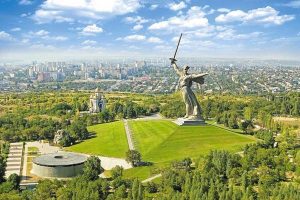
Mamaev Kurgan, Volgograd (Stalingrad), Russia
In the journal «Planet of Angels» No.1(04) 2019, the article «On the Grail and Mamaev Kurgan» tells about this unique place, which is one of the planetary Places of Power. This is a material link for the Portal, which carries out an energy-information exchange between this world and the higher worlds. Its unique energy-informational flows provide effective conversion of negative astral energy into creative, positive matter. The Mamaev Kurgan and its surroundings have always attracted people, representatives of different civilizations, at different times and eras. And therefore, the interest of archaeologists in it is not accidental. The main archaeological finds on the Mamaev Kurgan have not yet been completed. For this, the time has not come yet…
The Mamaev Kurgan is also the burial place of a world-known sniper of the Second World War Vasily Zaitsev (1915 – 1991), whose deeds are probably known by everyone. He is possibly the most well known 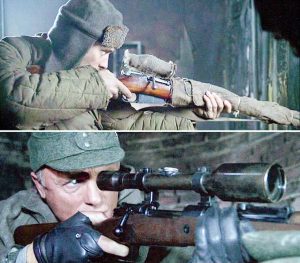 Soviet sniper in the west. His life and military career have been the subject of several famous books and films. For instance, William Craig’s 1973 “Enemy at the Gates: The Battle for Stalingrad”, and based on it the 2001 film “Enemy at the Gates”. Vasily Zaitsev was born in the south part of the Ural Mountains, 56 km northeast of Arkaim.
Soviet sniper in the west. His life and military career have been the subject of several famous books and films. For instance, William Craig’s 1973 “Enemy at the Gates: The Battle for Stalingrad”, and based on it the 2001 film “Enemy at the Gates”. Vasily Zaitsev was born in the south part of the Ural Mountains, 56 km northeast of Arkaim.
Don is the name of many rivers and not only in Eastern Europe. In England, the cities of Sheffield and Doncaster stand on the Don River. In Scotland, the city of Aberdeen is on the Don River. In France, Don is a tributary of Villena. The city of Toronto is located on the Don River in Canada. In Laos, Don is a tributary of the Mekong. Don is a professor at Oxford and Cambridge. Don is a noble title in Spain, Italy and Portugal. Hence, there is a deeper sacral meaning of the term Don / Sindhu / Indus. On the Don have been written the best novel and cast the best film about Russian Gypsies whose ancestors were from India. The writer’s surname Kalinin starts with the name of Kali, Goddess of Time, Creation, Destruction and Power in India.
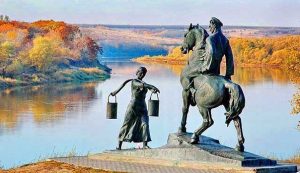 Russia, or the USSR, shaped Delhi’s intellectual life in the ‘60s and ‘70s. Maxim Gorky’s novel Mother was a cult classic. Leo Tolstoy, Anton Chekhov and Alexander Pushkin were on must-read lists. To make an impression, Mikhail Sholokhov’s And Quiet Flows the Don was the book of choice.
Russia, or the USSR, shaped Delhi’s intellectual life in the ‘60s and ‘70s. Maxim Gorky’s novel Mother was a cult classic. Leo Tolstoy, Anton Chekhov and Alexander Pushkin were on must-read lists. To make an impression, Mikhail Sholokhov’s And Quiet Flows the Don was the book of choice.
Pushkin was one of the most cultured and diverse Russian people at the beginning of the 19th century. His works reflect all historical eras from ancient Assyria and Egypt to the modern United States.
Pushkin was passionately in love with Gypsies. He was the godfather of the granddaughter of the famous gypsy singer Stesha (Stepanida Soldatova). Even the famous Italian singer Angelica Catalani (1780 – 1849), one of the greatest bravura singers of all time, admired Stesha’s unique singing.
The Pushkin poem «Gypsies» (1824) was recognized in Europe as the best work in world literature on the expression of the inner world of Gypsies, whose ancestors were form Northern India, including Gujarat, the motherland of Gandhi, whose spiritual teachers were Russian Leo Tolstoy and Helen Blavatsky, founder of the Theosophical Society in New York City in 1875, serving as a bridge between East and West, emphasizing the commonality of human culture. After her death the successor organizations to the original Theosophical Society are in India and California. Kali is a Hindu goddess, a destroyer of evil forces and human ignorance.
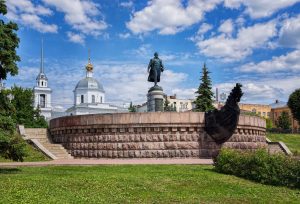
Monument of Nikitin in Tver, Russia
New Delhi serves as the capital of India. Village Delhi is 36 km north of Russian city Tver, the native place of Afanasy Nikitin (XV century), the first European who reached India and document his visit. His city Tver is often associated with dver and dwerka that are Russian words for door, gate, etc. In Sanskrit, door is dvara. Dwarka in Gujarat is one of the four sacred Hindu pilgrimage sites and one of the seven most ancient religious cities of India. Gujarat is the birthplace of Mahatma Gandhi and Narendra Modi, the 14th Prime Minister of India.
India is closely linked with Lemuria, as well as with some other civilizations that evolved over a hundred thousand years ago. One of the oldest colonies of Lemuria was based here. In the spiritual and genetic heritage of Russia, the Lemurian maternal principle (“Mother Russia”) is very clearly manifested.
The Lemurian Age finished approximately 12,000 years ago with the sinking of the continents of Lemuria. In the time of Lemuria, California was part of the Lemurian land. When the scientists and priests of Lemuria realized that their land was destined to perish, they obtained a permission (from the Spiritual Government of Earth) to build a city a mile or so beneath Mount Shasta in order to preserve their culture and their records.
In the North of Russia there are rivers and settlements called Shasta. In California (formerly Russian America), Shasta is one of the most famous places of the Force on the planet. There, the Lemurians founded the underground city of Telos, before the flooding of their native Lemuria. The name of Russia is associated with Lemuria.
In the World Channel magazine No.2 (27) 2016, interesting information is given on the common origin of the names of the Volga River and the country of Russia. It is rooted in Lemuria. In those distant times, the word «ROUS», which meant «BEARING LIGHT», «ENERGY CENTER», «ENERGY DISTRIBUTOR». Later, during the time of Eurasian Hyperborea, ROUS was the name of river, which is now known as the VOLGA. On this river, on the territory of modern city of Kazan (capital of modern Tatariya / Tatarstan), was located Borea, the Hyperborean capital.
This Hyperborea covered Eurasia and North Africa, later other territories joined it, including Arabia, India, China, and Siberia. The origins of Russia are in this Eurasian Hyperborea. It existed a thousand years, from 8,000 years ago to 7,000 years ago. The first or Arctic Hyperborea began its existence 568,000 years ago and ended 369,000 years ago, having existed for almost two hundred thousand years.
The ancient Lemurian meaning of the word «RUS», «ROS» is «CARRYING ENERGY, ENERGY CENTER». The sound of «OU» in the days of Lemuria was not divided. Later, the sound “OU” was transformed into either the sound “U” or the sound “O”. In some words, these sounds alternate with each other. That is why the words “RUSSIA” and “RUS” are used simultaneously. The Lemurian language still exerts its influence on the Russian language.
Hence, the special task of Russians is to learn to feel harmoniously, develop a culture of their emotions and become the “ROUS OF LOVE” — “RUSSIA OF LOVE”, the ENERGY CENTERS of LOVE, which elevates all people to their Spiritual Homeland — the Homeland of Unconditional Love, in the heart of the One Creator God. There, Love is one and inseparable. This is a special sacred center, a source of the initial energy of the highest feeling — Love. In English, there is word “HOUM”, but even in the time of Lemuria it was known that HOUM is the heart of the God-Creator of the Universe. The connection with the Lemurian language is closely preserved in many languages of the world.
In the time of Lemuria, their main spiritual centers were on the territory of modern Russia, namely, in the Kemerovo region and in the Sayan Mountains, where the Yenisei originates.
The Telos trilogy says that Lemur is a planet in the Dal Universe, from which the ancestors of the Lemurians came to Earth about 4.5 million years ago. The first Lemurians to come to Earth were Sananda, Maitreya, Saint Germain, El Morya, Maria Magdalene, Serapis Bey, Lanto, Adama and others well known today. These souls were destined to become the seed of the Lemurian race.
At that time, the Earth existed in the density of the fifth dimension, and they lived in bodies of the fifth vibration, but could lower their vibration level in order to experience more dense states. The abode to which the above souls came was Royal Teton, now known as Grand Teton National Park in the US state of Wyoming.
Over time, other races from the star systems of Sirius, Alpha Centauri, Pleiades, etc., came and joined these “seed» souls in order to evolve together. By mixing these races, a Lemurian civilization was born, which later became the mother one for the rest of the civilizations on the planet, including Atlantis. Gradually they lowered the vibrations of their consciousness, over time they were at the level of the fourth dimension, and later in the density of the third. However, this was not degradation, but only part of the Great Experiment. According to it, great souls wanted to test themselves in Duality (or separation from God), which is possible only in the third dimension. Here they do not remember where they came from and forget about their connection with the Creator, of which they are a part.
Thus, the Lemurian Age began about 4.5 million years ago and ended about 12,000 years ago. Lemuria is a giant continent, hid in the waters of the modern Pacific and Indian oceans. However, not everyone died, the archives were saved, and today Telos, the city of surviving Lemurians, thrives under Mount Shasta in California.
The task of Telos and the entities working there is to help ascend humanity, which begins with the realization of one’s own divinity and the exit from Duality. Shasta is considered the embodiment of the Center of the Galaxy (Great Central Sun — RA) and the place where most of the energy from it initially resides.
Today, Shasta is one of the main spiritual portals of the planet. It is located on the territory of former Russian America created and managed by people connected with Russian town Veliky Ustyug that is named the capital of the Age of Aquarius, into which the world is moving from Duality to the state of Oneness.
According to astronomical calculations, Veliky Ustyug (historically and spiritually associated with Shasta) is located under the Center of the Galaxy on the day of the summer solstice. Moreover, on this day is celebrated the memory of the most revered Ustyug saint — Procopius the Righteous, the ancestor of the Russian Royal House of the Romanovs. Another celebration on July 21 is the Day of Kazan icon of our Lady. Veliky Ustyug is a very important planetary point of the Light Grid and anchoring energy from the Center of the Galaxy.
The etheric Abode of Saint Germain stands over the town. The Physical Focus of the Abode operates under the direct Ray of this Hierarch of the Age of Aquarius. Veliky Ustyug is the only settlement in Russia and Earth, whose symbol is Aquarius. Here, as on Shasta, is the newly opened Ascension Portal, the maintenance of which is the goal of many souls who come to this plane.
In addition, Shasta is an interplanetary and intergalactic multidimensional Portal, above it there is a huge ethereal City of Light, called the Crystal City of Seven Rays, which is believed to have to descend into physical reality and become the first City of Light. Everyone on Shasta has long abandoned the games of duality and separation, freed themselves from illusions and live in Oneness with the Creator, venerating each other as His / Her aspects.
Appendix 1
Russian nobleman Nikolai Rezanov with his relatives from Veliky Ustyug formed the Russian-American Company in 1799 and acquired a monopoly on the American fur trade from Tsar Paul I.
Rezanov promoted the project of Russian colonization of Alaska and California to three successive Tsars — Catherine the Great, Paul, and Alexander I. Rezanov’s biggest legacy was the Russian-American Company whose mission was establishing new settlements in Russian America, conducting trade with natives, and carrying out an expanded colonization program. The company was under the High Patronage of the Russian Tsar. Moreover, Russian Emperor Alexander I (defeater of Napoleon) was a stakeholder of the Russian-American Company.
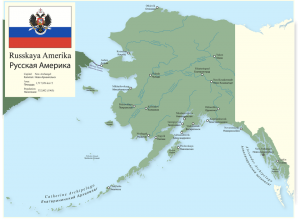 Russian America is the name of the Russian colonial possessions in North America from 1733 to 1867. Settlements spanned parts of what are now the U.S. states of California, Alaska and three forts in Hawaii. The capital of the Russian America was Novo-Arkhangelsk (New Arkhangelsk or New city of Archangels), which is now Sitka (Alaska). In 1867, Russia sold its North American possessions to the United States of America for $7.2 million.
Russian America is the name of the Russian colonial possessions in North America from 1733 to 1867. Settlements spanned parts of what are now the U.S. states of California, Alaska and three forts in Hawaii. The capital of the Russian America was Novo-Arkhangelsk (New Arkhangelsk or New city of Archangels), which is now Sitka (Alaska). In 1867, Russia sold its North American possessions to the United States of America for $7.2 million.
It is noteworthy that Rezanov was born on the same day (April 8) with Amir Timur historically best known as Tamerlane (the One Who Knows Merlin). He founded the Timurid Empire in and around modern-day Afghanistan, Iran and Central Asia. Tamerlane had symbol of Shambala on his personal seal. He never lost a battle. As an undefeated commander, Tamerlane is widely regarded as one of the greatest military leaders and tacticians in history. He was also a great patron of art and architecture. The Great Mughals of India were descendants of Tamerlane. His tomb in Samarkand was the model for their famous mausoleums in India, including the Taj Mahal. Tamerlane defeated the Golden Horde in the XIV century and by this created the conditions for Russia to become the largest state on the planet. Tamerlane started Renaissance in Central Asia before Europe. One of the most renowned rulers of the Renaissance Lorenzo Medici (the Magnificent) passed away on April 8 (1492). On this day but in 1764 was born Rezanov.
Rezanov was born in Saint-Petersburg, founded by Peter the Great on the Nile Meridian in 1703. On this sacral meridian are located: the Giza pyramids (built by other civilizations); Alexandria (established by Alexander the Great in 331 BC the northern coast of Egypt along the Mediterranean Sea); Constantinople (established by Constantine the Great in 324 AD).
Rezanov’s father got appointment to Irkutsk then the capital of Eastern Siberia which included territories from the Siberian River Yenisei to the Pacific Ocean. The Yenisey is the fifth-longest river system in the world, and the largest to drain into the Arctic Ocean. Irkutsk is located near the Lake Baikal, the largest freshwater lake by volume in the world, containing around 25% of the world’s fresh surface water. Baikal is among the world’s clearest lakes and is considered the world’s oldest lake. It is rich in oxygen, even in deep sections. Baikal is one of the most sacred places on Earth. The only river that drains out of Lake Baikal is Angara, the headwater tributary of the Yenisei.
Irkutsk is one of the largest cities in Siberia. The city is situated on the Angara River. Rezanov got a good home education in Irkutsk. Distinguished by natural linguistic abilities, by the age of 14 he knew 5 European languages.
